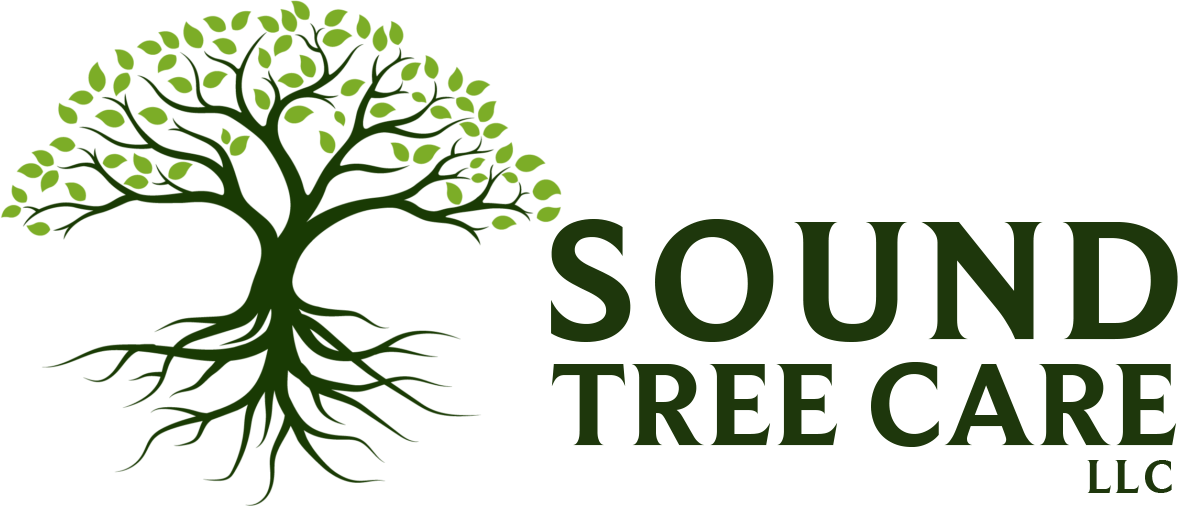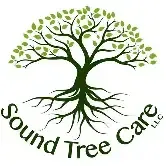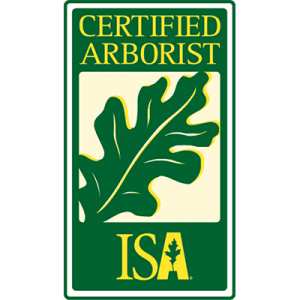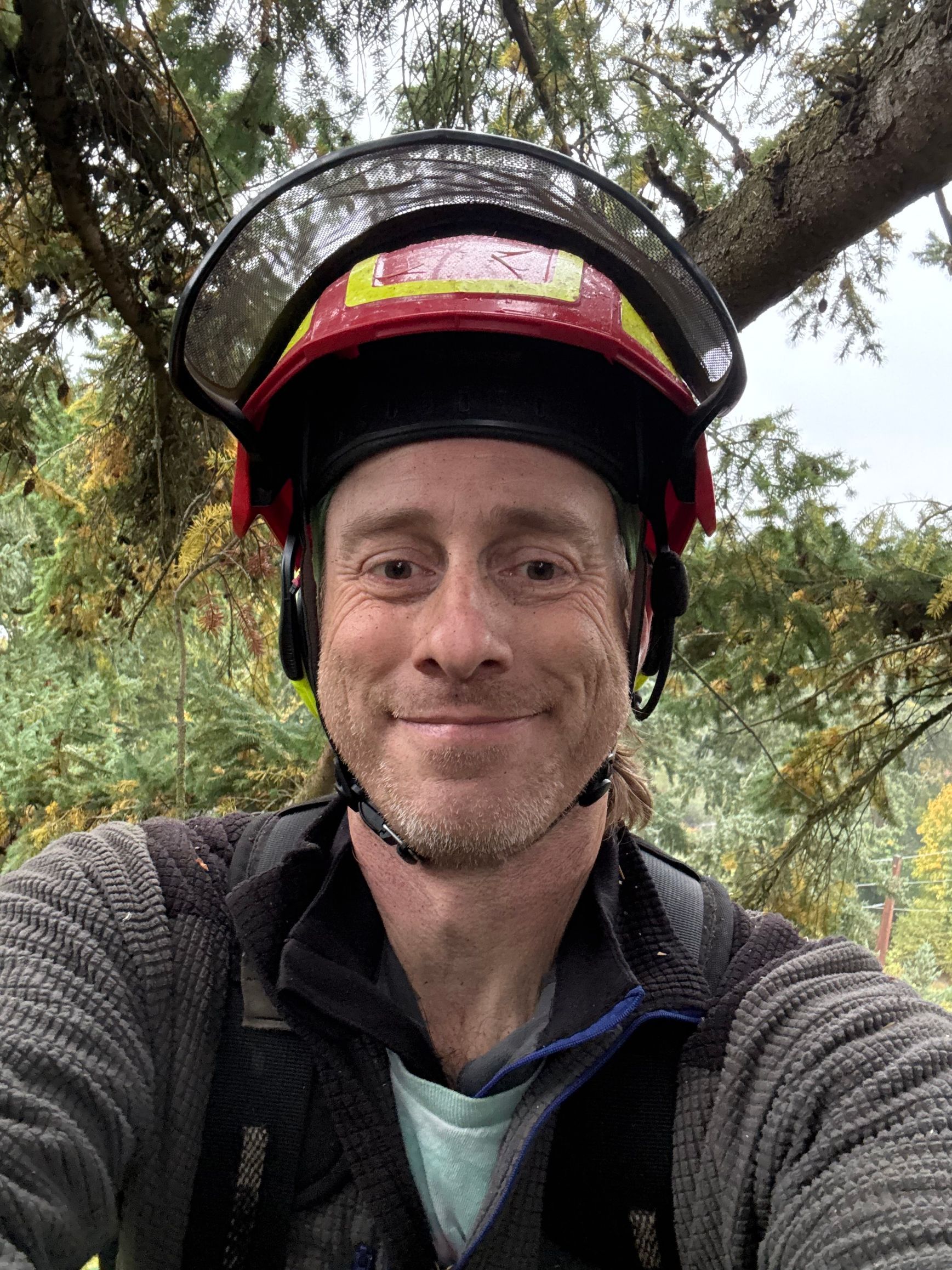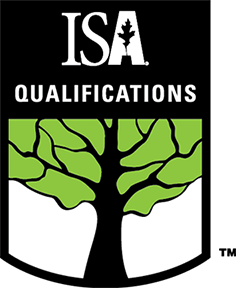19 Things That Can Harm Your Trees - Sound Tree Care
Written By: Eric Ledford
ISA Certified Arborist – PN-9290A
ISA Qualified Tree Risk Assessor (TRAQ)
19 Things That Can Harm Your Trees
Avoid these practices to ensure the health and longevity of your trees.
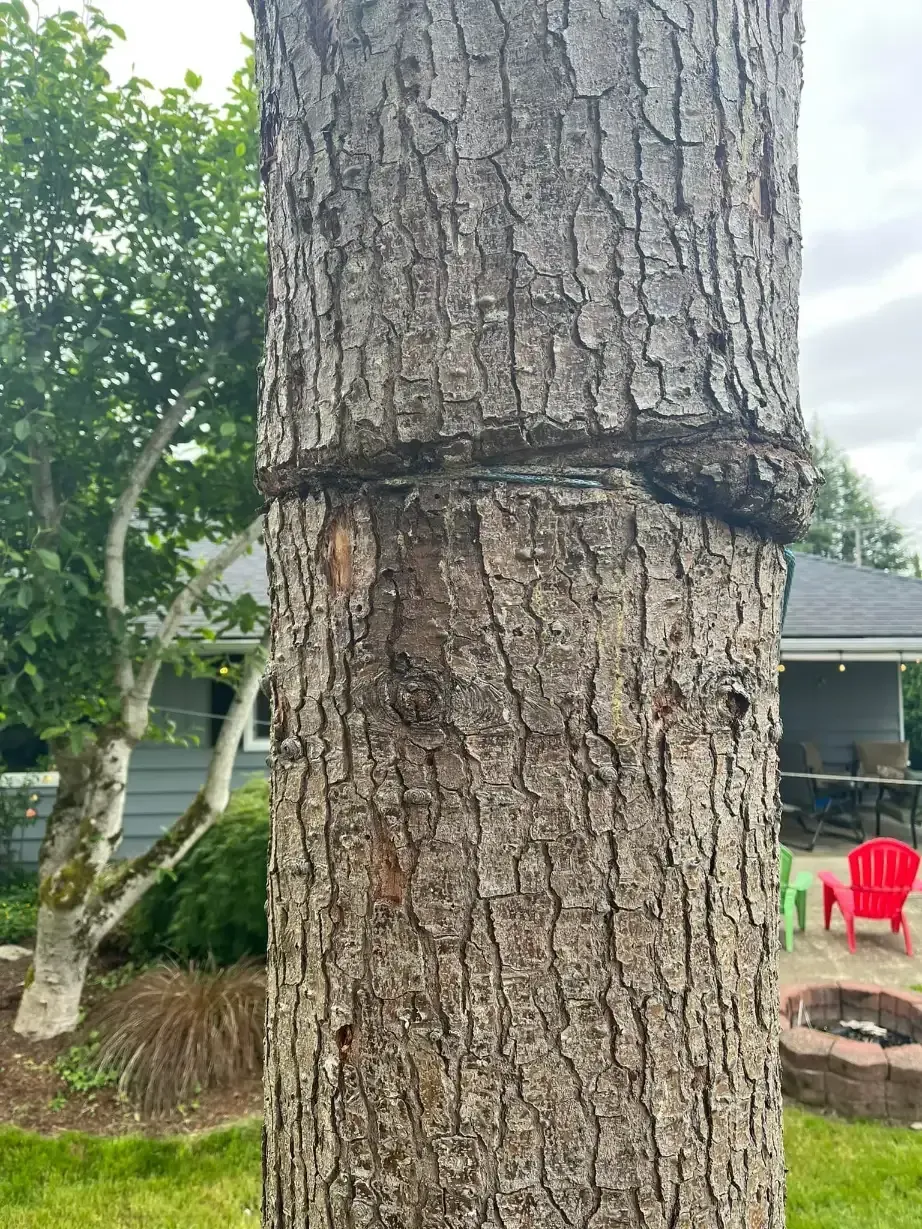
We love our trees and want them to thrive. But there are things we do that can harm and even kill our beautiful trees, and we don’t even realize it until it’s too late.
To help you out, we compiled the most common tree care mistakes so you can avoid them and keep your trees healthy and strong.
19 Things That Can Harm Or Kill A Tree
1. Wrapping A Clothesline Around Your Tree (Girdling)
Wrapping a clothesline (tree girdling) causes tree death. As the tree grows, the clothesline becomes embedded in the trunk and suffocates it.
Keeping your tree wrapped with anything for an extended period can damage the bark and cambium beneath the bark where girth growth occurs.
2. Tying Your Dog To Your Tree
Tying your dog to your tree may seem mundane, but it can harm your tree. Your tree’s bark is its first line of defense against pests and disease. As the rope, chain, or tether moves with your dog, it rubs the bark and damages it, exposing your tree to infestation and disease.
3. Putting Mulch Too Close To The Base Of Your Tree
Mulching around your tree keeps the soil around your tree moist and prevents weeds and other invasive plants from growing. However, applying mulch too close to the base of your tree and over the above-ground root zone can lead to harmful bark rot and make your tree vulnerable to infestations.
4. Applying Too Much Mulch
The layer of mulch should be no more than 3 inches thick. Applying too much mulch provides a haven for pests that harm your trees.
Putting fresh mulch on top of old mulch does more harm than good. The old mulch can harbor mold and disease. Adding new mulch on top provides an insulated barrier that enables it to grow and spread.
Read Fall Tree Care Tips From A Seattle Tree Care Specialist for tips on how to properly mulch your trees.
5. Over-Pruning Or Incorrect Pruning
Pruning is an essential part of healthy tree care. However, pruning too much or “topping” your trees weakens them. Excessive pruning is one of the leading causes of premature tree death.
If you prune your trees without the proper tools or using incorrect techniques, you can wound them, leaving them exposed and vulnerable to pests and diseases that can kill them.
To ensure proper pruning for your trees, we recommend leaving this vital practice to your local tree care specialist.
6. Attaching A Bird Feeder, Bat House, Ornaments, Or Other Objects To Your Trees With Nails Or Screws
While you want to encourage wildlife, attaching bird feeders, bird houses, and other objects to your tree with nails or screws is not good for your trees. The nails or screws wound the tree bark and cambium, creating an opening for pests and bacteria to penetrate the protective layers and harm the tree.
The tree does heal those wounds and grows over nails, anchors, and other fasteners, but those things unnecessarily put your tree at risk.
7. Stacking Things Around The Base Of The Tree
Piling objects and building around or over your tree's base and above-ground root zone can harm and even kill your tree by preventing the roots from vital access to water and sunlight. It also compacts the soil around the tree's base, which leads to inadequate water absorption.
The tree roots are their organ system. They are what keep your tree alive and healthy. If the roots are damaged or unable to function, the tree fails to thrive and eventually dies.
Remember that your tree's girth expands as the tree grows, so anything around the base of your tree can prevent girth growth, or the tree will grow around it, causing trunk malformation or worse.
Avoid parking, storing equipment or materials, building, or excavating over or around the tree's roots.
8. Filling tree cavities with concrete
You may think you are helping your tree by filling cavities from fallen or removed sail branches or injuries with concrete, but you are not. It’s best to leave the tree to heal itself or contact a local arborist or tree care company for help.
9. Pruning Your Trees During The Wrong Season
Pruning your trees in the wrong weather conditions can weaken your tree and leave them vulnerable to pests and disease. The
best time to prune your trees in Seattle is during the spring, after flowering, and before they turn color in the fall.
10. Staking Or Guying Your Tree Too Much Or For Too Long
Using stakes, cables, and rope to support a young or weak tree (staking or guying) is standard. However, applying too much structural support can hinder the tree's ability to grow its necessary girth and support systems.
Structural support for your tree should be a temporary measure while the root system takes hold and is removed once it has established itself. Leaving stakes and guys around your tree can cause it to grow over or around them, causing girdling, bark damage, and becoming top-heavy.
11. Planting Your Tree Close To Power Lines
If you think planting a tree in the right of way is a good idea, think again. Power lines running above are hazardous once the tree has grown. Utility companies do not allow trees to touch or be near the power line for safety and will cut your tree ad hoc, or remove it at your expense, to keep that from happening.
When choosing plants and trees for your property, consider the surroundings. If you have power lines running above, plant trees and shrubs that will not grow tall enough to touch them.
12. Building Over Or Covering The Roots
As with piling things around the base of your tree, building over or covering the roots, particularly in the above-ground root zone, deprives them of water and nutrients, damages them, and kills your tree.
13. Salting Near Your Trees
Salting walkways, driveways, and parking lots in the Seattle winters keep us safe but is toxic for our trees. The salt kills the roots, seeps into the soil, and destroys them. Avoid salting near your tree or its roots.
14. Applying Herbicides Or Pesticides To Or Near Your Tree
Herbicides and pesticides keep weeds and grass from growing but also harm your tree. Apply mulch around your tree to prevent weeds and plants from invading naturally.
15. Over Watering
While trees need lots of water, you've overwatered if the soil around your tree is mud. Wet soil harbors mold, is inviting to pests, and can lead to bark and root rot.
When watering your trees, reduce the water flow from your hose to a dribble. Set the hose without a nozzle between the roots at the base of your tree and leave it there for 2 to 3 hours. Then move the hose to another spot and water for another 2 to 3 hours. Repeat that one more time.
The soil will be moist in some areas and dry in others, and that’s okay.
16. Wounding Your Tree Or Its Roots With A Lawn Mower Or Weed Wacker
Avoid mowing or using a weed wacker around the above-ground root zone of your trees. Accidentally cutting or damaging the roots can kill your tree.
17. Leaving Insect Or Disease Issues Untreated
If you suspect insect infestations or identify strange growths on the limbs or trunk of your trees, have them looked at by a local arborist or tree care service immediately. Leaving insect or disease issues untreated can lead to premature tree death. The disease and insects can also spread to other trees and plants; you don’t want that.
Catching potential insect infestations and diseases early can save your tree.
18. Planting Your Tree Too Deep Or Piling Too Much Soil Over The Roots
Your tree is at its most fragile during planting and establishment. Planting your tree too deep covers the tree's base in soil, causing bark rot and early death.
Do not place gravel at the bottom of the hole unless you have installed a drainage system. The water that pools there will rot the roots.
Avoid the urge to pile a ton of soil on top of the roots. An above-ground root zone at the tree's base is natural and necessary.
Each tree species requires different planting methods. To ensure your trees are planted properly, consult with an arborist, nursery, or tree care company near you.
19. Planting Your Trees Too Close Together Or In A Bad Spot
So many people plant trees according to their current size. They don’t learn about the type of tree, its growth patterns, or its needs.
For example, some trees require full sun for survival, so planting them in the shade will kill them.
Planting trees too close together or beside a faster-growing species will lead to one tree thriving and the rest dying.
Planting certain types of trees too close to your home or other structures can lead to safety issues for your and your home and eventually force you to remove the tree.
Before you choose trees for your property, do your research. Consult with tree care specialists who can help you select suitable trees for you and help you plant and care for them, so they thrive.
Conclusion
Avoiding these things will help your trees stay healthy and strong. If you need advice or have questions about ways to ensure the longevity and vitality of your Seattle area trees, we can help. We have an arborist on staff and a team of knowledgeable tree care specialists who will happily provide you with guidance and tree care services.
Sound Tree Care LLC
is a tree care company serving Seatac and the greater Seattle, Washington, area with superior tree pruning, tree rehabilitation, support systems, and more. With a certified arborist on our team, we can address any concerns about your tree and provide you with the fall tree care services you need.
